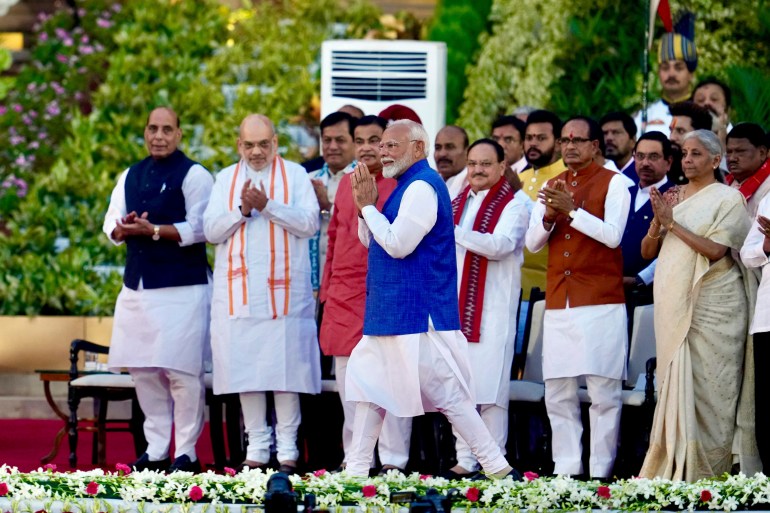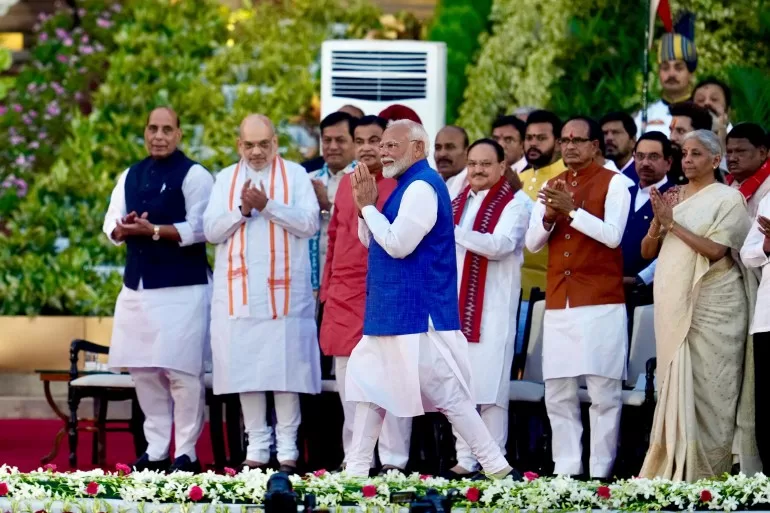Modi’s Bharatiya Janata Party has formed a coalition government with several partners after losing its outright majority in the election.
India’s President Droupadi Murmu administered the oath of office to Modi at a ceremony on Sunday at the Rashtrapati Bhavan, the president’s palace in New Delhi, attended by thousands of dignitaries, including the leaders of seven neighbouring countries, Bollywood stars and industrialists.
“Honoured to serve Bharat,” Modi posted on X, minutes before he was sworn in, referring to India’s name in Indian languages.
Supporters cheered, clapped and chanted “Modi, Modi” as the 73-year-old leader, dressed in a white kurta tunic and blue half jacket, was called to take his oath.
After being sworn in, Modi, flanked by officials from his Hindu-nationalist party and leaders of his coalition partners, vowed to protect India’s constitution.
Modi was followed by senior ministers in the previous government: Rajnath Singh, Amit Shah, Nitin Gadkari, Nirmala Sitharaman, Subrahmanyam Jaishankar, and Piyush Goyal, among others, whose portfolios are yet to be announced.

Modi, who started as a publicist of the Hindu nationalist Rashtriya Swayamsevak Sangh (RSS), the ideological parent of his Bharatiya Janata Party (BJP), is only the second person after independence leader Jawaharlal Nehru to serve a third straight term as prime minister.
He secured the third term after a multi-stage election that concluded on June 1 with the support of 14 regional parties in his BJP-led National Democratic Alliance. In the previous two terms, his party had won an outright majority.
Challenges ahead
Despite the united front, political analyst Zoya Hasan of New Delhi-based Jawaharlal Nehru University has told AFP news agency that Modi’s new coalition alliances could lead to friction down the road.
“Chandrababu Naidu and Nitish Kumar both are crafty politicians. So in some ways, Modi might be meeting his match in these two,” she said, referring to two BJP allies who do not share the BJP’s nationalist agenda.
“They have friends across the aisle. And surely the opposition will be wooing them,” Hasan said.
Modi is also under pressure to ensure India’s economic disparity does not widen.
India’s economy grew by 8.2 percent in the last fiscal year, one of the fastest rates among major economies.
But domestically, a lack of enough jobs, high prices, low incomes and religious fault lines pushed voters to rein him in.
“The middle class is the driving force of the country,” Modi said at an alliance meeting on Friday.
“In the coming days, we will work on increasing middle-class savings, improving their quality of life, and seeing what needs to be changed in our rules to achieve that.”
